Table of Contents
Australian national parks play a crucial role in providing incredible opportunities for adventure activities. These parks are not only home to breathtaking landscapes and unique wildlife but also serve as playgrounds for outdoor enthusiasts. Vast expanses of wilderness, rugged mountains, dense forests, and pristine coastlines. National parks in Australia offer a diverse range of adventures that cater to all interests and fitness levels. Whether you’re an avid hiker seeking thrilling trails, or a nature lover eager to spot rare wildlife. Or an adrenaline junkie looking for water activities like kayaking, these parks have it all. The importance of these parks in promoting adventure activities goes beyond just physical exercise.
When it comes to adventure activities, Australian national parks truly have something for everyone. From awe-inspiring hiking trails that lead you through ancient rainforests or up to rugged mountain peaks, to camping under a blanket of stars. Wildlife spotting is another popular activity. There you can witness kangaroos bounding across open plains, koalas snoozing in eucalyptus trees, or colorful parrots darting through the air. If you’re a birdwatching enthusiast, you’ll be captivated by the diverse avian species that inhabit these parks. For water lovers, kayaking and canoeing adventures await in serene lakes, winding rivers, and along picturesque coastlines. And let’s not forget about the thrill of rock climbing, conquering vertical cliffs while surrounded by stunning landscapes. The variety of adventure activities available in Australian national parks ensures that there’s always something new and exciting to discover.
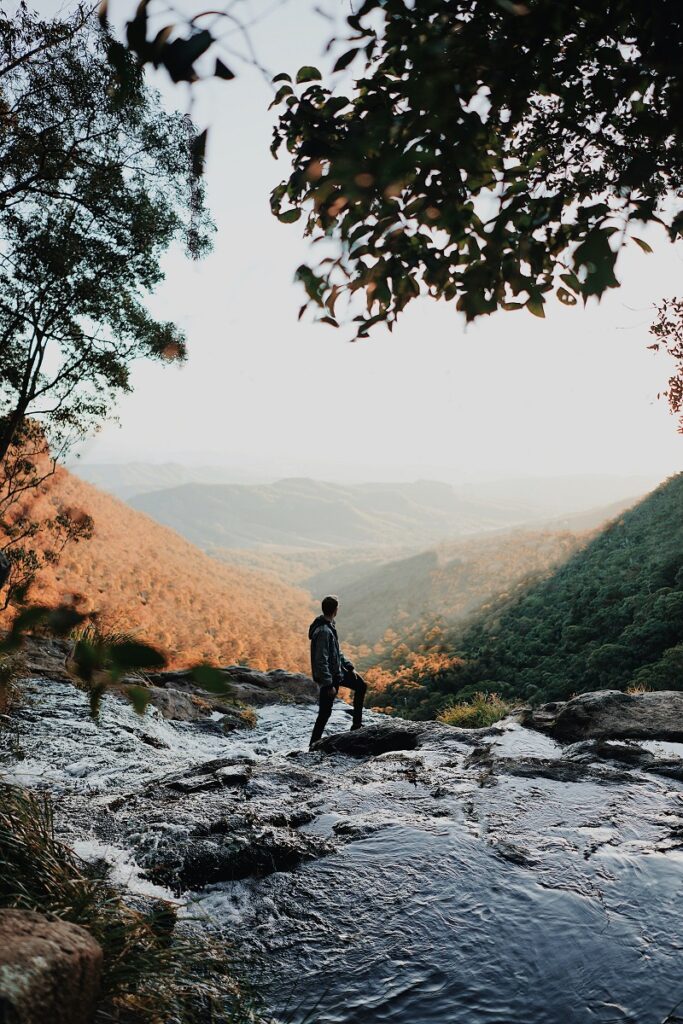
Adventure Activities in Australian National Parks
Hiking
Embarking on hikes in national parks in Australia presents an incredible opportunity to immerse oneself in a diverse array of landscapes and ecosystems. The sheer variety of these environments is awe-inspiring. From the rugged sandstone cliffs and deep canyons of the Blue Mountains National Park in New South Wales. To the ancient rainforests teeming with life in Queensland’s Daintree National Park, each step reveals a new facet of nature’s beauty.
Venture into the heart of the Northern Territory’s Uluru-Kata Tjuta National Park to witness the iconic Uluru (Ayers Rock) and the striking rock formations of Kata Tjuta (The Olgas). There the arid red desert meets the vast expanse of the sky. Journey to the Grampians National Park in Victoria to encounter a tapestry of wildflower-covered plains, rugged mountain ranges, and cascading waterfalls. Or explore the coastal wonderland of Wilsons Promontory National Park in Victoria, where sandy beaches, granite peaks, and coastal heathlands paint an enchanting backdrop.
Popular hiking trails in different national parks:
- Overland Track in Cradle Mountain-Lake St Clair National Park, Tasmania. A multi-day trek through diverse alpine landscapes, ancient rainforests, and stunning mountain vistas.
- Larapinta Trail in West MacDonnell National Park, Northern Territory. A challenging 223-kilometer trail that takes hikers through the rugged beauty of the MacDonnell Ranges, with breathtaking views and unique cultural sites.
- Cape to Cape Track in Leeuwin-Naturaliste National Park, Western Australia. A 135-kilometer coastal trail that showcases the rugged cliffs, white sandy beaches, and stunning limestone formations of the southwest coast.
- Thorsborne Trail in Hinchinbrook Island National Park, Queensland. A remote and pristine 32-kilometer trail that winds through rainforests, mangrove swamps, and along beautiful secluded beaches.
- The Great Ocean Walk in Great Otway National Park, Victoria. A spectacular 104-kilometer coastal trail that offers breathtaking views of the iconic Twelve Apostles, towering cliffs, and lush forests.

Camping
Camping in Australian national parks offers a range of options to suit different preferences and levels of outdoor experience. Most national parks provide designated campgrounds with basic facilities such as toilets, picnic tables, and fire pits. These campgrounds are typically accessible by car and are ideal for families or those looking for a more convenient camping experience. For those seeking a more secluded and immersive experience, backcountry camping is available in many parks. This type of camping involves trekking or hiking to remote locations and setting up camp in designated areas. Often with minimal facilities.
Additionally, some parks offer specialized camping experiences, such as beach camping along pristine coastlines or camping near rivers and lakes. Furthermore, it provides opportunities for activities like swimming, fishing, or kayaking.
Camping in different Australian national parks offers unique and unforgettable experiences. Imagine falling asleep under a blanket of stars in the rugged outback of Kakadu National Park. And wake up to the soft rays of the morning sun illuminating the majestic sandstone cliffs in the Flinders Ranges National Park. In the Great Barrier Reef Marine Park, camping on secluded islands allows you to wake up to the gentle lapping of waves, explore vibrant coral reefs through snorkeling or diving, and witness stunning sunsets over the turquoise waters.
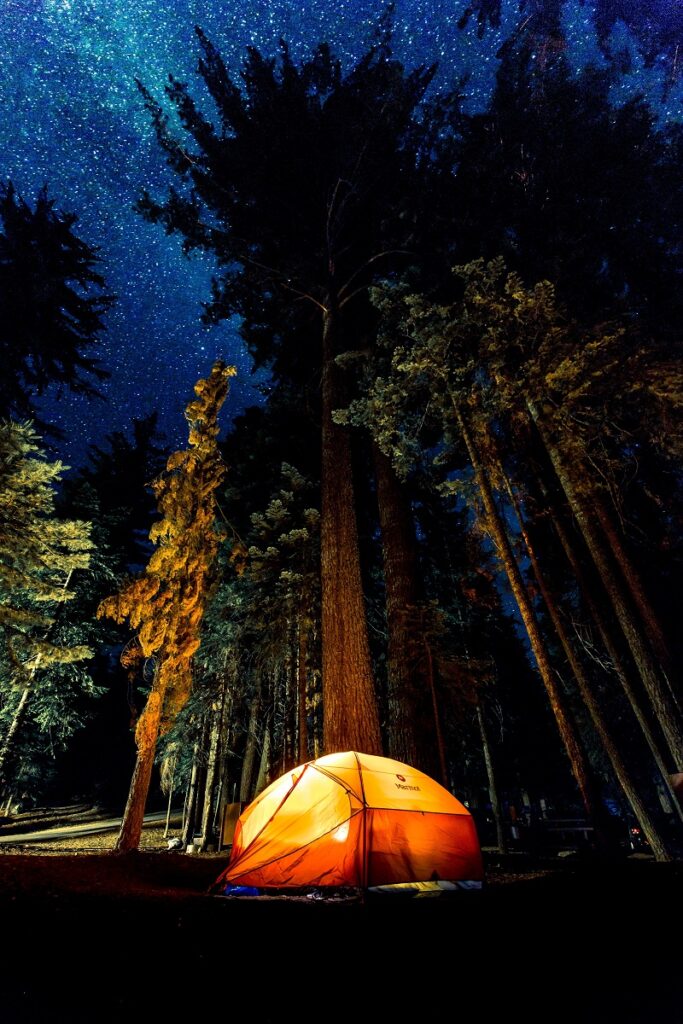
Wildlife Spotting
Australia is renowned for its incredible biodiversity and unique wildlife, making it a paradise for nature enthusiasts. From the iconic kangaroos and cuddly koalas to the elusive platypus and the colorful array of parrots, national parks in Australia is teeming with remarkable creatures. Its waters are home to magnificent marine life, including majestic humpback whales, playful dolphins, and the vibrant Great Barrier Reef.
Australian national parks offer fantastic opportunities for wildlife spotting. It allows visitors to get up close and personal with the country’s diverse fauna. In parks such as Kakadu National Park, you can spot saltwater crocodiles, wallabies, and an abundance of bird species as you explore its wetlands and rugged landscapes. Head to Queensland’s Daintree National Park, where you can observe elusive cassowaries, colorful butterflies, and unique reptiles amidst the ancient rainforest.
Wilsons Promontory National Park in Victoria is home to wombats, kangaroos, and a variety of birdlife. While Tasmania’s Freycinet National Park offers encounters with Tasmanian devils, wombats, and endemic bird species. The Great Ocean Road in Victoria allows you to witness the magnificent southern right whales during their annual migration, as well as playful fur seals and little penguins.
Examples of iconic Australian animals that can be encountered:
- Kangaroos and wallabies
- Koalas
- Platypus
- Tasmanian devils
- Wombats
- Emus
- Kookaburras
- Cockatoos and parrots
- Saltwater crocodiles
- Great Barrier Reef marine life (coral, fish, turtles, sharks, etc.)

Birdwatching
Australian national parks are a haven for bird enthusiasts, boasting an incredibly diverse array of avian species. From colorful parrots and cockatoos to unique emus and the iconic kookaburras. These parks offer endless opportunities to spot and admire a wide variety of birds. Whether you’re exploring the ancient rainforests of Queensland or the arid landscapes of the outback. Or the coastal wetlands, you’ll encounter an abundance of feathered wonders. Australia’s isolation and distinct ecosystems have allowed for the evolution of numerous endemic species.
For avid birdwatchers and enthusiasts, Australian national parks offer a range of resources and guided tours. Many parks provide informative brochures and birding checklists to help visitors identify and learn about the species they may encounter. Some parks even have dedicated bird hides or observation platforms strategically placed to maximize bird viewing opportunities. Additionally, guided birdwatching tours led by experienced naturalists and local experts are available in several national parks. These tours provide valuable insights into bird behavior, habitats, and conservation efforts. It allows enthusiasts to deepen their knowledge and make the most of their birdwatching adventure.
Popular birdwatching spots in different parks:
- Lamington National Park, Queensland. Known for its diverse rainforest habitats, this park is home to colorful parrots, bowerbirds, and the elusive Albert’s lyrebird.
- Kakadu National Park, Northern Territory. Explore wetlands and billabongs where you can spot majestic birds. Such birds are the black-necked stork, magpie geese, and the rare Gouldian finch.
- Werribee Open Range Zoo, Victoria. This unique park offers guided birdwatching safaris. It allows you to observe and photograph a wide variety of native and migratory bird species.
- Hattah-Kulkyne National Park, Victoria. This park is a birdwatcher’s paradise, with over 200 species recorded. Such as the mallee fowl, Major Mitchell cockatoo, and varied honeyeaters.
- Carnarvon Gorge, Carnarvon National Park, Queensland. Explore the rugged gorges and catch a glimpse of the stunning and colorful birdlife. Such as the rainbow bee-eater and turquoise parrot.
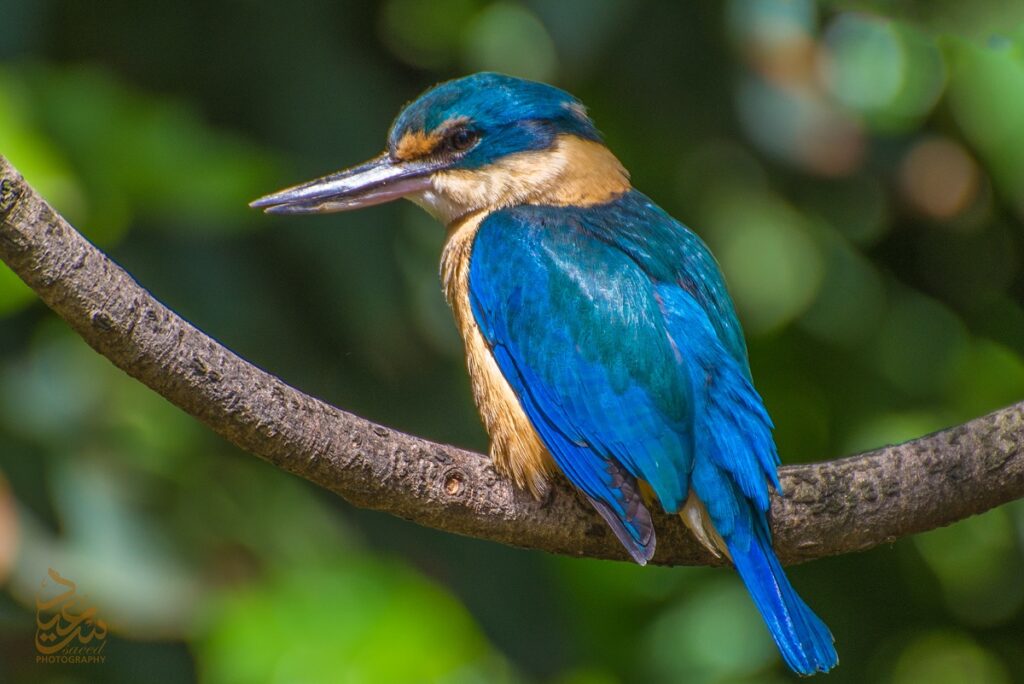
Kayaking and Canoeing
Australian national parks are blessed with a multitude of water bodies that are perfect for kayaking and canoeing adventures. From serene rivers and pristine lakes to sparkling coastlines and tranquil lagoons. These parks offer a diverse range of aquatic environments to explore. Picture paddling along the winding waterways of Kakadu National Park in the Northern Territory, immersing yourself in the vast wetlands.
Alternatively, navigate through the calm waters of Tasmania’s Freycinet National Park, surrounded by breathtaking granite peaks and crystal-clear bays. The tranquil rivers and billabongs in Queensland’s Daintree National Park provide a picturesque setting for paddlers. Whether it’s gliding through the majestic Murray River in Victoria or meandering along the secluded beaches of Wilsons Promontory National Park. The water bodies within national parks in Australi also offer endless opportunities for kayakers and canoeists to connect with nature in a serene and captivating way.
Imagine the sensation of gliding along calm waters, with breathtaking landscapes unfolding around you. The stillness of the surroundings allows you to fully appreciate the pristine natural environment.
The gentle lapping of the water against your kayak, the distant calls of birds, and the rustling of leaves create a serene soundtrack. As you paddle, you may witness stunning sunsets casting golden hues across the horizon.
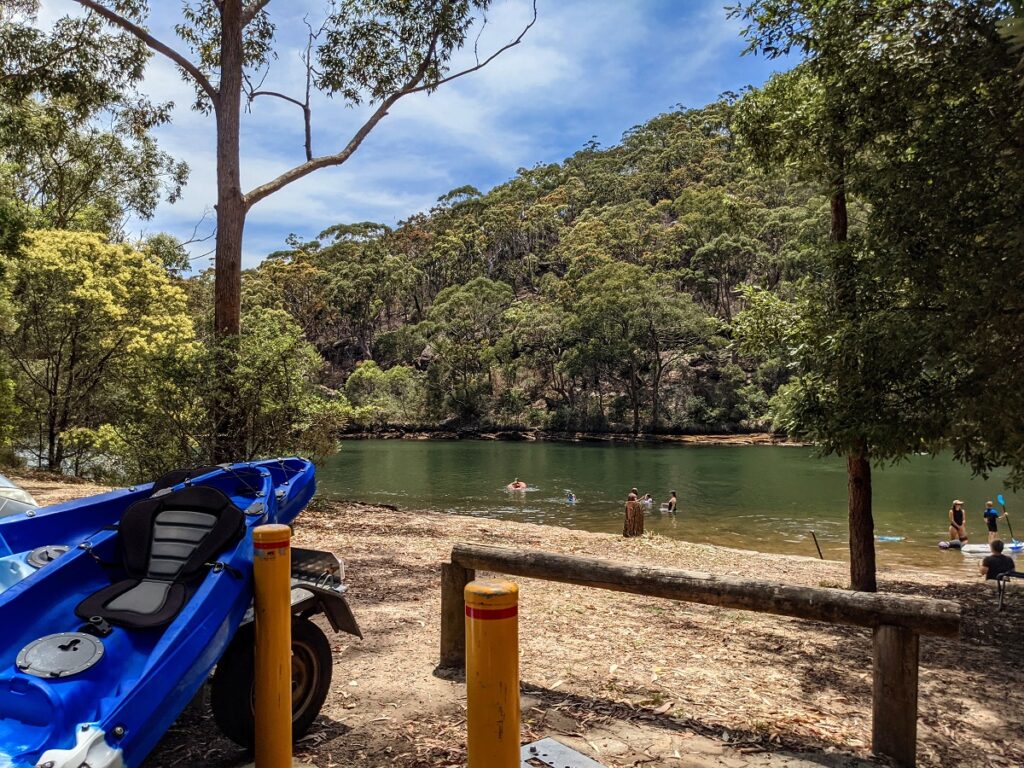
Rock Climbing
Several Australian national parks provide exhilarating rock climbing opportunities. It allows enthusiasts to test their skills and experience the thrill of scaling vertical cliffs and rocky outcrops. These parks feature a diverse range of geological formations that are ideal for rock climbing. Whether you’re a beginner looking for introductory climbs or an experienced climber seeking challenging routes. From the world-famous Grampians National Park in Victoria with its impressive sandstone cliffs to the rugged cliffs of Freycinet National Park in Tasmania. These parks offer a playground of vertical challenges for climbers to conquer. Furthermore, a mix of traditional climbing, sport climbing, and bouldering options, national parks in Australia provide a haven for rock climbers.
Rock climbing in Australian national parks offers a wide range of difficulty levels and suitable climbing areas. Beginner-friendly climbing areas can also be found in parks such as Blue Mountains National Park in New South Wales. More experienced climbers can test their skills on challenging routes in places like Mount Arapiles-Tooan State Park in Victoria. IT is famous for its world-class traditional climbing opportunities. The Grampians National Park offers a mix of moderate to advanced climbing routes on its sandstone cliffs, providing both technical challenges and stunning panoramic views.
Tasmania’s Freycinet National Park boasts dramatic granite cliffs that attract climbers seeking both trad and sport climbing adventures. Additionally, the Flinders Ranges National Park in South Australia provides a unique climbing experience on its ancient quartzite formations.
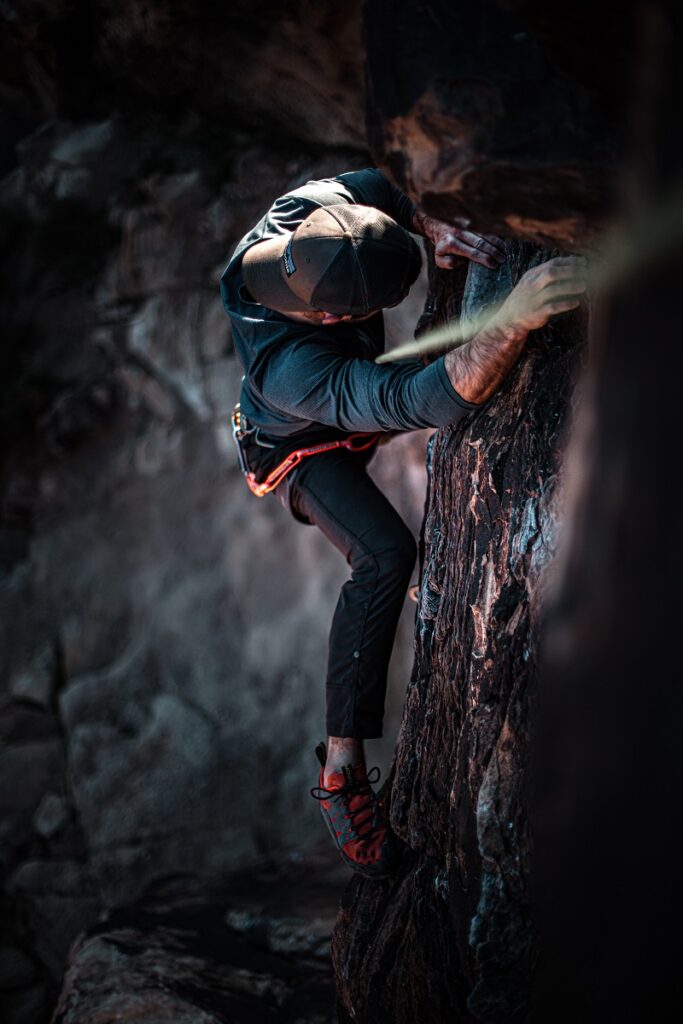
Trail Running
Australian national parks provide an incredible playground for trail runners, with a multitude of trails that cater to various fitness levels and preferences. Whether you’re a seasoned trail runner or a beginner looking for a new challenge, these parks offer an array of terrains and landscapes to explore on foot. From the breathtaking coastal paths of Royal National Park in New South Wales to the rugged mountain trails of Mount Kosciuszko National Park in Victoria. Each park offers a unique and invigorating running experience. So, lace up your running shoes and venture into the heart of nature.
Organized trail running events or races held in national parks:
- The Six Foot Track Marathon in Blue Mountains National Park, New South Wales
- The Surf Coast Trail Marathon in Great Otway National Park, Victoria
- The Coastal Classic in Royal National Park, New South Wales
- The Surf to Summit Trail Run in Noosa National Park, Queensland
- The Convict 100 in St Albans, New South Wales, covering sections of Dharug and Yengo National Parks
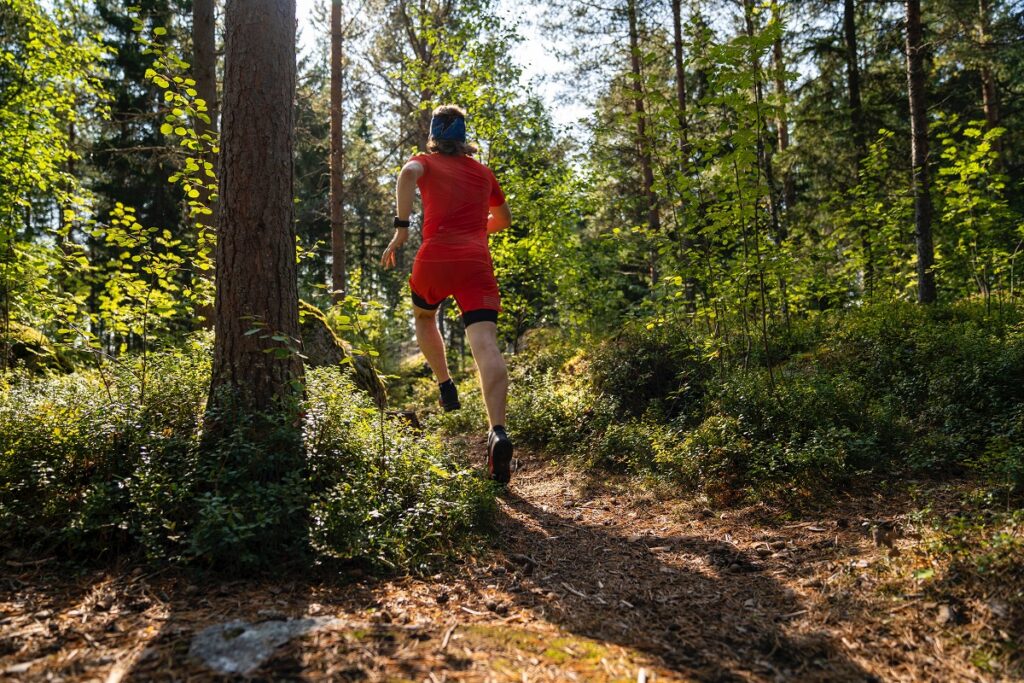
Outdoors Essentials





Get active and embrace the natural beauty – start your outdoor fitness adventure in Australia’s national parks today!
National parks in Australia provide a magnificent backdrop for outdoor fitness activities. They also offer a unique and rejuvenating experience for enthusiasts seeking to stay active and connect with nature. In addition, these parks encompass diverse landscapes, ranging from lush rainforests to rugged mountains, expansive coastlines to tranquil lakes. It presents endless opportunities for outdoor fitness pursuits. Whether you prefer hiking, trail running, cycling, or engaging in bodyweight exercises. National parks offer an immersive environment that invigorates the mind, body, and soul. Engaging in outdoor fitness activities allows you to breathe in the fresh air, and soak up the natural beauty. And also escape the confines of a traditional gym, resulting in a holistic approach to well-being that combines physical fitness with the therapeutic benefits of being in nature.
Exercising in the natural surroundings of national parks brings numerous benefits. The fresh air, natural scenery, and peaceful atmosphere create an uplifting and motivating environment that enhances physical performance and mental well-being. Also, exercising in national parks allows for a break from the urban hustle and bustle, providing a sense of tranquility and connection to nature. It also offers an opportunity to engage in activities that challenge and strengthen the body, whether it’s conquering a steep trail, practicing yoga on a grassy meadow, or performing bodyweight exercises against the backdrop of a stunning landscape. In addition to physical exertion, natural surroundings create a holistic experience that promotes fitness, rejuvenation, and a deeper appreciation for the beauty of the natural world.
